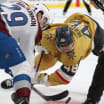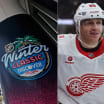Los Angeles Department of Water and Power's electric-powered truck driving down street on smoggy day, 1967
, from the Los Angeles Times Photographic Archive , UCLA Library. (CC-BY)
Smog-as we well know now-the result of emissions of internal combustion engines reacting with particles in the atmosphere, has been sitting heavy on the landscape of Los Angeles for years now. What's strange is that we tend to get singular blame for smog, when in reality it is something that has affected cities across the globe-most notably London's famous pea-soup fogs were just that: smog, though somewhat worse due to the prevalence of soft coal burning through the 19th century.
In Los Angeles, however, the early 1970s showed few signs of a respite. We sit in a basin, and the way the weather system works when one is surrounded by the ocean on one hand and mountains on another is that it's almost impossible for pollution to dissipate. Los Angeles was christened
"The Smog Capital of the World,"
and ever since we've been trying to shake that moniker. (Incidentally, we've been doing a good job-smog in Los Angeles is at
an all-time low
, with a decrease of 98% of vehicle-related air pollutants.)
Despite all that, there were still those that loved the city, warts and all. British architectural critic Reyner Banham filmed a BBC documentary in 1972, that is literally him driving around Los Angeles and commenting on everything he sees.
"…you might wonder," he asks, "what I'm doing in Los Angeles, which makes nonsense of history and breaks all the rules. Well, I love the place with a passion that goes beyond sense or reason."
Watch: Youtube Video
Banham's unabashed love of Los Angeles is infectious, and it's a delightful time capsule to what all parts of the city were like in 1972, from Olvera Street to Watts to the Eames House, all narrated by his lilting voice. He's incredibly defensive of the city as well, calling it a "great city" and "significant city" despite it breaking all the traditional rules of cities, which makes him seem rather prescient. To know that we're tapping into a history of artists and others inspired by this strange, bizarre, hypnotic city is comforting. to those of us that love the city just as unabashedly, even if we can't speak as eloquently to precisely what draws us to it and why we love it.
50 Years In LA:
The Creation of the ARPANET And The Birth Of the Internet
The Building Of The Fabulous Forum
Emily Hummel is the creator of @arresteros + @brilliantmashup + internet explorers club




















